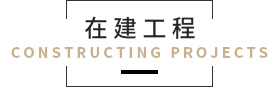




 338
338 01_玄關(guān)-舞箔材質(zhì)打造的城市隱居入口 Foyer - a secluded entrance in the city made of MAIHAKU
02_玄關(guān)細(xì)節(jié)-傳統(tǒng)木梁插合工藝 Foyer Detail - traditional wood beam Insertion craft
03_就餐區(qū)-照明打造的光影體驗(yàn) Dining area - shade and shadow experience created by illumination
04_店主背景墻-采用左官漆喰工藝 Owner's background wall - using SAKAN SHIKKUI craft
05_就餐區(qū)-飾り棚 Dining area - decorative shelves
06_客人上座-金銀箔背景墻面 Guest's seat as an seat of the honour - background wall made of metal foil
07_檜木細(xì)節(jié)-拼接處嵌入銀杏圖案 Hinoki - embedded ginkgo pattern in the splices
08_吧臺(tái)踢腳-手工雕刻制作的層疊玻璃 Bar skirting - hand-carved cascading glass
09_數(shù)寄屋式柱-古木柱與手工玻璃的結(jié)合 The SUKIYA style pillars - ancient wooden columns with handmade glass
010_走廊的差し石-特別定制玻璃磚 SASHIISHI in hallway - specially customized glass tile
011_走廊展示壁龕-侘寂的美學(xué)感受 Niches in the hallway - WABISABI aesthetics
012_洗手間 Washroom
013_入口-遠(yuǎn)離喧囂都市的空間 Entrance - a space away from the bustling city
014_傳統(tǒng)與現(xiàn)代對(duì)比-束石和差し石 Tradition and modernity - TSUKAISHI and SASHIISHI
015_精制過(guò)程-玄關(guān)古木柱 Making process - ancient wooden pillar in foyer
016_精制過(guò)程-壁龕的金銀箔面 Making process - metal foil on the back of niches
017_精制過(guò)程-竹編天花 Making process -bamboo woven ceiling
018_精制過(guò)程-數(shù)寄屋式柱 Making process - the SUKIYA style pillars
019_數(shù)寄屋的地面鋪裝靈感 Floor covering inspiration from SUKIYA
020_精制過(guò)程-洞石材質(zhì)的生命感 Making process - a sense of the material's vitality
021_平面圖 Plan

北京市
工作地點(diǎn)

聯(lián)系方式
15101559171




